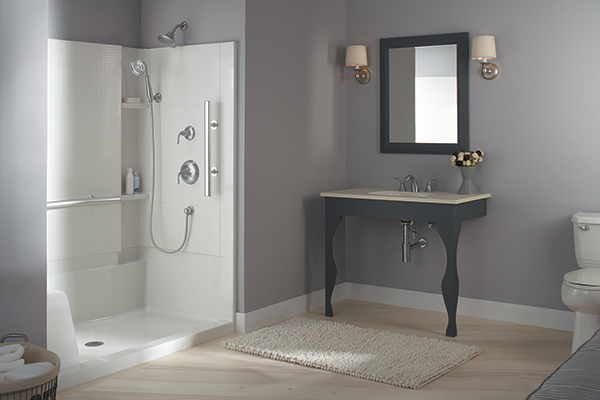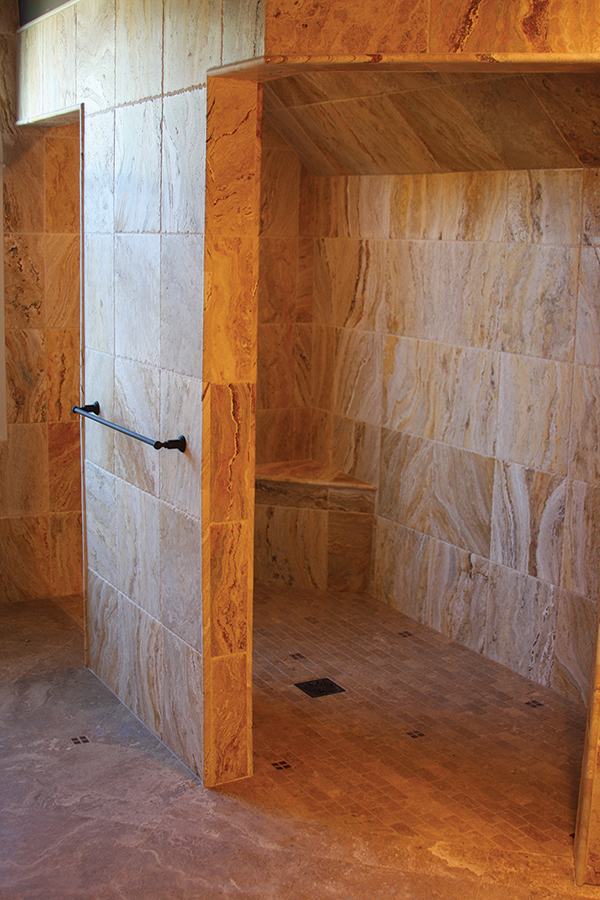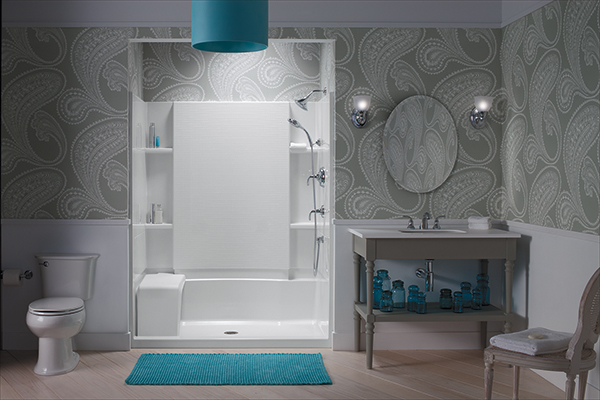
This article is part of a 12-month home accessibility series. Each segment will focus on a particular aging-in-place need to provide the insight and resources necessary to be successful in this growing market. "What color do you want the countertops?” was the question that almost pushed me over the edge when I was building my home. My wife and I decided to design the home ourselves—from the building plans all the way through the selection of every single item. While meeting with our contractor, he asked questions about the countertop, and then we walked into a showroom with a wall filled with 2x3-inch samples of countertop color options. The selection was overwhelming, and almost brought me to suffer a breakdown. I had chosen to build my own home, but had not considered the stress involved. Think of the individuals whom we deal with every day, forced to change their lives and lifestyles because of something that they did not choose—an accident, illness, disease, etc. These people are faced with a mountain of decisions that they may or may not be prepared to deal with. The one saving grace throughout the process of building my home was my contractor’s on-staff interior decorator. She was able to walk me through my needs and help narrow my choices so I could make better decisions. The assessment process can help homeowners define their needs with industry professionals, giving both the end user and the professional a better understanding of the project at hand.
Enter with a Strategy
When meeting with a customer to help assess their needs, remember to have a well-planned strategy before you begin. Ask yourself these questions: What do they need? How can I help them? When do they need this help? Where will I get the answers? Beginning the process with this strategy helps you design the floor plan and project scope that will best suit your customer’s needs. Develop a checklist to use as a guideline when you go into the home to ensure that areas needing attention are not overlooked. Bring a camera, and take detailed notes and pictures during the walk-through/initial assessment to make sure that you remember the particulars accurately.
Arriving at the House
To effectively perform a home assessment, it is imperative that you visit the home. Assessing the home without visiting would be like building a new house without a blueprint. The outcome would be far less effective, and the additional cost of fixing mistakes could be staggering. When you first arrive at the home, remember that the assessment has already begun. Upon your approach to the home, you can begin to determine what this individual may have to overcome when it comes to accessing the home. Remembering that this is their home—and not a modified hospital or medical facility—will help you maintain the proper focus required to help keep the house a home.
 This spacious bath includes a low-threshold shower with built-in seat, grab bars, shelves at varying heights and a lower control with removable sprayer. The vanity is open underneath for easy accessibility for wheelchair users.
This spacious bath includes a low-threshold shower with built-in seat, grab bars, shelves at varying heights and a lower control with removable sprayer. The vanity is open underneath for easy accessibility for wheelchair users.Beginning Consultation
Consultation is one of the most critical steps in the overall process. Misinterpretation or omission in this area can create a string of issues that affect the outcome of the accessibility equipment plan. Early in my career, I visited a home with a seasoned occupational therapist (OT). I was accustomed to the interview process to determine the needs of the patient. I was pleasantly surprised when the OT quickly converted the interview process into a walk-through assessment that followed in the actual steps of the homeowner’s daily routine. This was incredibly eye-opening and showed us aspects that might not have been identified on an interview or even a standard walk-through. Jean Henderson, ICU pediatric nurse and transport flight nurse for Mayo Clinic (mayoclinic.org) in Rochester, Minn. says, “There are times that we are forced to keep patients at the hospital for several months because the medical equipment needs outside of the hospital are not fully taken care of. Understanding the complete diagnosis and prognosis and how it will affect each area of their lives is crucial to providing what the patient needs to live in their home.”
Divide and Conquer
Accessing the home—Breaking up the consultation/interview into sections will help maintain focus in what can become a cumbersome task. One of the first items to assess is the home entrance and egress and consider the possibility of using a ramp. Brandy Ferrell, customer success representative and modular ramp specialist at EZ-ACCESS (ezaccess.com)says, “Many people overlook the capabilities of their mobility device when choosing a ramp. They think that if it has a motor, it will go. Understanding the limitations of the mobility equipment being used and taking into consideration the yard slope are the most common items overlooked in the ramp assessment process.” Bathroom—One of the next major issues that an individual will face is in the bathroom. Getting in and out of the bathroom itself, using the toilet, and access to the tub or the shower are among a few of the items to consider. One out of every three seniors experienced a fall last year, and 80 percent of those occurred in the bathroom. Having the proper equipment and training the patient completely in the proper use of that equipment will mitigate the potential of a fall.
 A zero-entry shower can be accessed on both sides of the dividing wall. A gentle
slope toward the drain ensures water doesn’t pool or escape to the main part of the bath, and a corner seat provides a spot for users to sit and bathe if necessary.
A zero-entry shower can be accessed on both sides of the dividing wall. A gentle
slope toward the drain ensures water doesn’t pool or escape to the main part of the bath, and a corner seat provides a spot for users to sit and bathe if necessary.Bedroom—A simple task that many of us take for granted is getting in and out of bed. Patient maneuverability in the bedroom with the use of a mobility device, required assistance in getting in and out of the bed, or the need of a special bed are a few of the points that need to be addressed in this room. Follow this by addressing some simple topics, such as ability to reach shelving and success of getting dressed without assistance will define some other potential obstacles in the bedroom. Kitchen—Eating and nutrition are areas that are major topics of discussion in medical journals and senior publications. One of the factors that affects this area is the ability of the patient to function and cook in their own kitchen. In a recent interview of a few seniors needing home modification, one senior shared that cooking a meal in their kitchen was simply too exhausting. Evaluating the ability to maneuver in the kitchen, access the cabinets, and get to the appliances to be able to cook were a few of the items that need to be considered in the kitchen. Living area—This might be considered the most lived-in area of the home, where the majority of time will be spent. Developing a needs assessment plan that details how a person gets in and out of the furniture in the living area will address consideration for items such as lift chairs and transfer devices. In addition, lighting may be a point of consideration for reading and completing other activities while in the living area. Throughout the home—Other points of consideration will be door handles, light switches, hall ways and maneuvering throughout the entire home. Internal stairs, sunken floor areas and thresholds may also be obstacles to overcome within the home. Document the Detail As mentioned earlier, having a way to document the detail in the assessment will give you the ability to research the equipment needed and refer back to the consultative evaluation that you have completed. The use of an iPad or tablet device that allows for pictures with notation on the pictures can help simplify the process.
 Slight adjustments such as low thresholds for showers, lower shelves and fixtures and seating can still look beautiful and be functional for seniors, boomers and even young families with small children.
Slight adjustments such as low thresholds for showers, lower shelves and fixtures and seating can still look beautiful and be functional for seniors, boomers and even young families with small children.In upcoming issues, we will delve into the detailed assessment of each room and fulfillment of equipment options for each room in the house. Along the way, we will create a template checklist these rooms to build upon for overall home assessment. Once the detailed assessment is completed, you can begin the process of prioritizing and finding the financial options for the equipment required. Keep in mind that if the payer is an insurance company or third party payer, the solutions that they are willing to pay for may vary from the ones that you may offer.
Don’t Miss Out
Remember, if you fail to identify and address an issue, you will leave your customer in a vulnerable position. This also opens the door for them to search out another home accessibility specialist to take care of their needs. This potentially removes them from your circle of care and gives that opportunity to your competitor. “People like to feel like they are in control, even when circumstances in their life are beyond their control. They don’t want to feel managed, and they want to have options that address their needs, as well as taking into consideration the caregivers, the unsung heroes of that household,” says Jere McIntyre, director of modification, People Working Cooperatively (pwchomerepairs.org). “I try to view each patient as if it were my mom, and how I would want her to be taken care of if she were in their exact position.”
